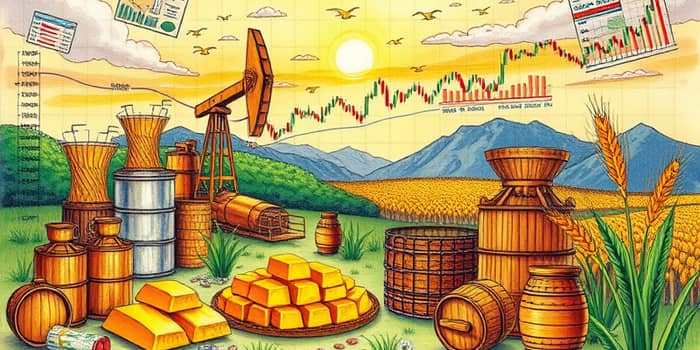
In a world where price swings can determine livelihoods and fortunes, futures contracts offer both protection and possibility. From the rolling plains of wheat fields to the bustling trading floors of global exchanges, these instruments shape the fate of producers and speculators alike.
A legal, standardized agreement to buy or sell underpins every futures contract. These agreements specify a commodity’s quality, quantity, delivery time and place, giving participants clarity and confidence. Whether you are a farmer locking in next season’s revenue or an investor seeking profit from price shifts, the structure of futures contracts is your guide.
Traded on regulated exchanges like the CME Group, each contract bears the name of its expiration month—December corn, March crude oil—ensuring uniformity. Both buyer and seller carry the obligation to transact at maturity, unless they choose to offset positions beforehand.
Hedging transforms uncertainty into stability. Producers and consumers alike use futures to shield their margins from sudden price moves. Imagine a corn farmer facing the anxiety of a potential price drop at harvest. By selling futures, the farmer locks in a sale price today, mitigating future losses. Conversely, a food processor might purchase wheat futures to secure input costs, guarding against spikes.
While hedging reduces volatility, it introduces basis risk due to underlying differences. The deliverable quality or location may not perfectly mirror the hedged asset. Effective hedging demands ongoing attention to market correlations.
Speculation thrives on foresight and courage. Unlike hedgers, speculators seek profit from anticipated price movements without intent to ever exchange physical goods. Their presence brings vital liquidity, absorbing risks hedgers wish to avoid. With high leverage amplifying both gains and losses, speculators must tread carefully.
By interpreting supply forecasts, weather patterns, and geopolitical shifts, speculators weave narratives that move markets. Their bold bets can drive price discovery, setting benchmarks used by hedgers worldwide.
The spectrum of tradable commodities is vast. Here are the major groups and typical contract specifications:
Centralized exchanges standardize contracts and stand between buyers and sellers through a clearinghouse. This system enforces a robust margin system to ensure participant solvency. Traders post initial and maintenance margins, serving as performance bonds that cover potential losses from large price swings.
Most positions are closed out before delivery; only a small fraction results in physical exchange. Cash settlement has become increasingly common, reflecting the market’s evolution toward paper-based risk management.
Futures markets offer distinct benefits:
Yet, every advantage carries risk:
Consider the soybean farmer who hedged 100 contracts at planting, securing a break-even price despite a market collapse at harvest. Her foresight shielded her community’s food supply and preserved her farm’s legacy.
Or the small hedge fund that accurately anticipated a cold winter, building long heating oil positions that delivered outsized returns. Their success funded renewable energy research, demonstrating how speculation can drive positive change.
These stories reveal that futures trading is not merely about numbers; it is a human endeavor. It weaves together courage, discipline, and vision, shaping economies and lives.
Whether you aim to hedge or speculate, follow these guidelines:
Above all, approach the market with respect. Futures trading rewards preparation and penalizes impulsivity. By combining knowledge with discipline, you can transform uncertainty into opportunity.
Futures contracts elevate the art of risk management and the science of speculation. They empower farmers, producers and investors to navigate price volatility with intention. Whether locking in tomorrow’s costs or betting on market trends, these instruments unlock a world of possibility.
Embrace the market’s challenges with a clear strategy and resilient mindset. In doing so, you join a legacy of innovators who have harnessed the power of futures to build stability, drive growth and inspire progress.
References













